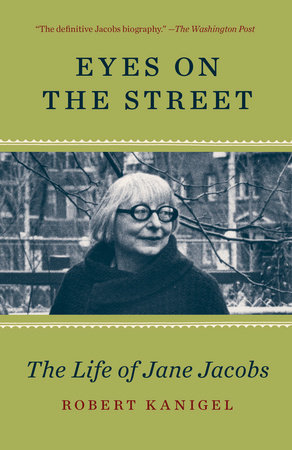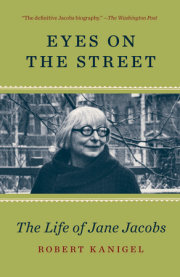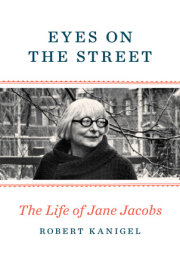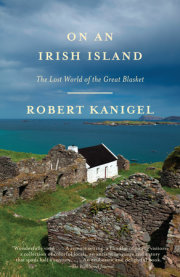The Great Bewildering WorldIt couldn’t have been long into her life there that Jane learned what every New Yorker knew, that “the city” was Manhattan, period. The fur district she’d stumbled upon so fortuitously was in Manhattan. So was the diamond district.
Vogue itself, New York fashion personified, was in Manhattan. The jobs she got that first year were all in Manhattan, as were the better jobs she sought now. So were Broadway, Times Square, Fifth Avenue, the tall towers, the publishing houses, the galleries, and practically all the other iconic places of New York. It was hard not to feel the pull. Jane had only to glance down Henry Street, at the great stone arches that were the Brooklyn Bridge approaches, to take herself in her mind’s eye to Manhattan. For Jane, as for any young person of curiosity and spunk, the city beckoned.
On one of her forays into Manhattan near the end of that first year, probably in late summer, Jane got out at the Christopher Street subway stop; she “liked the sound of the name,” she’d say. She had no idea where she was, “but I was enchanted with this place . . . I spent the rest of the afternoon just walking these streets.”
As she got off the train, she’d have seen the name of the station set in mosaic tile, as in most of New York’s four hundred–odd subway stations:
CHRISTOPHER ST.
SHERIDAN SQ.
Sheridan Square was no “square” at all, of course. But out of its irregular and unlovely expanse radiated Seventh Avenue South and wide West Fourth Street. Stroll along them, or on Grove Street, Washington Place, or Waverly Place, which all converged there, and soon you found yourself among a warren of little streets south and west of the square, the clubs and bars lining West Fourth Street that drew revelers from the outer boroughs, art galleries, small shops, modest apartment buildings.
It was here, in a low-lying bowl of cityscape mostly off the tourist maps, far from the great employment centers, not grand, not rich, maybe a little ragtag, that Jane now found herself. No neatly defined shopping districts here in the streets near Sheridan Square, nothing like upscale Fifth Avenue or proletarian Fourteenth Street—no neatly defined anything. Blocks of handsome brownstones across Sixth Avenue that could have stepped out of a Henry James novel, musical Italian filling the shops and stoops of the tenements to the south, gritty warehouses and a sprinkling of small-scale industry to the west. Along Bleecker Street, a bakery selling Italian bread for a nickel a loaf, a cheese shop selling ricotta for twenty-five cents a pound. Peasant smocks, antique jewelry, and second-hand books for sale arrayed on one block. A drugstore selling cosmetics and contraceptives. An ice cream parlor where the neighborhood’s young Italian men hung out. The scale was small, the range and variety stunning, the streetscape obeying nothing like cool Cartesian order. This wasn’t New York in its bigness, its numbers, its densest crowds that Jane found here. If anything, it was New York in all its smallness, its irregularity, its turn-the-corner-and-what-do-you-find little shocks and surprises.
The Manhattan street grid fell apart here, as if by an abrupt, invasive fault in an otherwise orderly crystal matrix. West Fourth Street, obediently grid-bound just to the east, at Sheridan Square abruptly veered northwest and, after a few blocks, dared to run, against all sense and logic, into West Eleventh Street. Other streets, like Carmine, Cornelia, and Jones, simply disappeared after a block or two. A conscientious student of urban life, Professor Caroline Ware of Vassar College, had recently tallied the “contents” of one block of Jones Street. She counted old-law tenements and 1840s-vintage houses, an apartment house that went up only in 1929, factories that made feather mattresses, children’s toys, and Italian ice cream; an old stable, a settlement house, two grocers, a tobacco and candy store, an ice dealer’s cellar, a French hand laundry, a barber shop, a tea room, an “Italian men’s café,” a wrought iron workshop, and (it still being Prohibition at the time of her census) three speakeasies. All in a single block. Behind this line of five-story façades—inside, unseen, hidden—life played out each day and night, in all its struggles, pains, and pleasures; on the busy sidewalks outside, traces and whispers only of those silent stories, spilling out into the city’s everyday jangle.
Spend an afternoon on streets like Jones Street, as Jane did, and any part of the brain habituated to easy order was bound to come away bruised. But Jane? She “liked the little streets,” she’d remember. “I liked the variety of it and there were craft shops of hand-made things of ingenuity and artistry. I had never seen shops like those. I just thought it was great.” The whole neighborhood was great. Could she have said why, exactly? Maybe not. She was nineteen. She was all enthusiasm.
Copyright © 2016 by Robert Kanigel. All rights reserved. No part of this excerpt may be reproduced or reprinted without permission in writing from the publisher.














